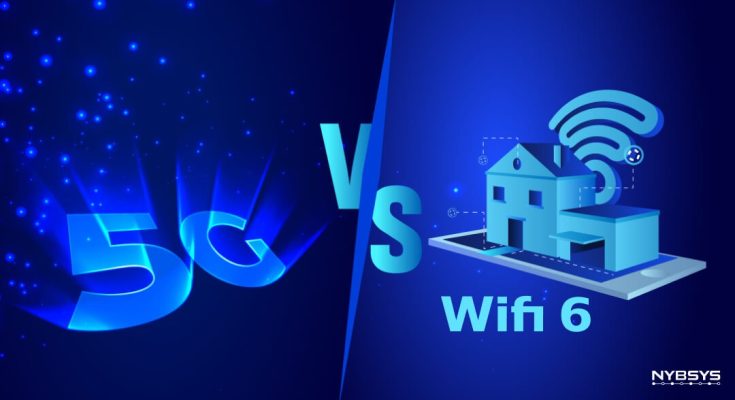As connectivity becomes increasingly central to both personal and professional life, understanding the technologies that power our digital interactions is more important than ever. Two of the most talked-about advancements in recent years are 5G and Wi-Fi 6. While both promise faster speeds, lower latency, and improved capacity, they serve different purposes and operate in distinct environments. Comparing 5G and Wi-Fi 6 isn’t about choosing one over the other—it’s about understanding how each fits into the broader landscape of wireless communication and what that means for businesses and consumers alike.
5G is the fifth generation of cellular network technology, designed to deliver high-speed internet access over wide geographic areas. It builds on previous generations by offering significantly faster data rates, reduced latency, and the ability to connect a massive number of devices simultaneously. This makes it ideal for mobile applications, smart cities, autonomous vehicles, and industrial IoT deployments. Unlike Wi-Fi, which is typically confined to local networks, 5G is managed by telecom providers and requires infrastructure such as cell towers and base stations. Its reach and mobility make it a powerful tool for enabling seamless connectivity across urban and rural environments.
Wi-Fi 6, on the other hand, is the latest iteration of the Wi-Fi standard, officially known as 802.11ax. It’s designed to improve performance in dense environments like offices, stadiums, and homes with multiple connected devices. Wi-Fi 6 introduces technologies such as orthogonal frequency-division multiple access (OFDMA) and target wake time (TWT), which help manage bandwidth more efficiently and extend battery life for connected devices. While previous Wi-Fi versions struggled with congestion and interference, Wi-Fi 6 is built to handle the demands of modern networks, offering faster speeds and more reliable connections within a localized area.
One of the key differences between 5G and Wi-Fi 6 is how they’re deployed and accessed. 5G requires a subscription to a mobile carrier and is subject to coverage limitations based on infrastructure and spectrum availability. Wi-Fi 6, by contrast, is typically managed by the user or organization, offering more control over network settings and security. For businesses, this distinction matters. A company might use 5G to support mobile workers or remote operations, while relying on Wi-Fi 6 for in-office connectivity and internal systems. The ability to tailor each technology to specific use cases allows for more flexible and efficient network design.
Speed is often the headline feature for both technologies, but it’s important to consider context. 5G can theoretically deliver speeds up to 10 Gbps, though real-world performance varies depending on factors like signal strength, network congestion, and device compatibility. Wi-Fi 6 also offers impressive speeds, with peak rates around 9.6 Gbps under optimal conditions. However, these numbers don’t tell the whole story. Wi-Fi 6 excels in environments with many devices, maintaining consistent performance even when the network is heavily loaded. 5G shines in scenarios where mobility and wide-area coverage are essential, such as streaming high-definition video on the go or supporting connected vehicles.
Latency is another area where both technologies show significant improvement. 5G aims for latency as low as one millisecond, which is critical for applications like remote surgery, real-time gaming, and industrial automation. Wi-Fi 6 also reduces latency compared to previous versions, enhancing responsiveness for tasks like video conferencing and cloud-based collaboration. For businesses, lower latency means smoother user experiences and more efficient operations, especially in time-sensitive environments. Whether it’s a factory floor or a virtual meeting room, the ability to transmit data quickly and reliably is a game-changer.
Security considerations also differ between the two. 5G networks benefit from advanced encryption and authentication protocols built into the cellular infrastructure, but they are also subject to regulatory oversight and potential vulnerabilities in carrier systems. Wi-Fi 6 introduces WPA3, a more robust security standard that protects against brute-force attacks and improves encryption. For organizations managing sensitive data, the ability to configure and monitor Wi-Fi networks directly can be an advantage. However, both technologies require ongoing vigilance and best practices to ensure secure communication.
The rise of smart devices and IoT has further highlighted the complementary nature of 5G and Wi-Fi 6. In a smart home, Wi-Fi 6 might handle internal connectivity for appliances, sensors, and entertainment systems, while 5G provides external access and mobile control. In a smart city, 5G could support public infrastructure and transportation systems, while Wi-Fi 6 powers local networks in schools, hospitals, and businesses. The interplay between these technologies enables a more connected and responsive environment, where data flows seamlessly across different domains.
From a strategic standpoint, businesses should view 5G and Wi-Fi 6 not as competing options but as components of a holistic connectivity strategy. Understanding the strengths and limitations of each allows for smarter investment and deployment decisions. For example, a logistics company might use 5G to track vehicles and shipments in real time, while leveraging Wi-Fi 6 in warehouses to manage inventory and automate workflows. The goal is to match the right technology to the right task, optimizing performance and cost-effectiveness.
As both 5G and Wi-Fi 6 continue to evolve, their impact will be felt across industries and daily life. They represent a shift toward faster, more reliable, and more intelligent networks that support the demands of a digital-first world. Whether enabling remote work, powering smart infrastructure, or enhancing consumer experiences, these technologies are laying the foundation for the next generation of connectivity. Understanding their differences—and how they complement each other—is essential for anyone looking to navigate the future of wireless communication with confidence and clarity.




